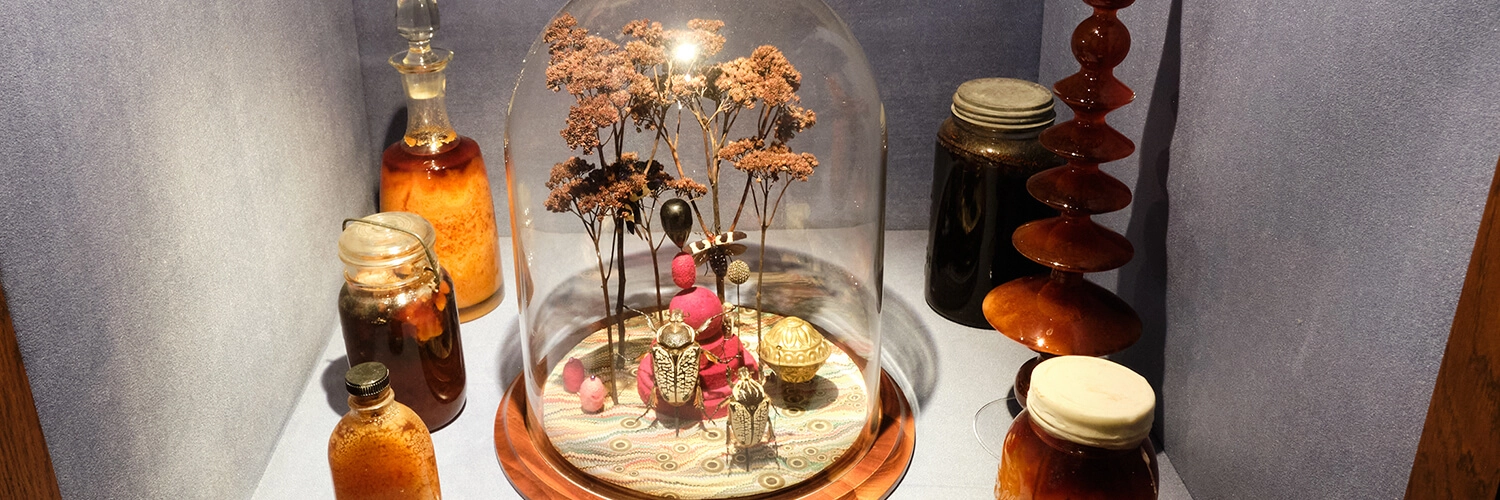 Phil Weston
Phil Weston A Cabinet of Wonder: Artworks by Jennifer Angus
June 15 – October 13, 2024
This exhibition features bell jars and small “cabinets of curiosity” by Madison-based artist Jennifer Angus. Using exotic insects as her primary artistic medium, Angus designs elaborate installations and narratives comprised of thousands of preserved specimens. With these compositions, she explores themes of beauty, pattern, ornamentation, Victorian-era natural history collecting and scientific discovery, relationships between humans and insects, and the important roles insects play in ecosystems.
A professor of Design Studies at the University of Wisconsin-Madison, Angus has exhibited her work at museums and galleries around the world and has authored a novel and several short stories related to the insect worlds she explores in her art.
Artist’s Statement
The Victorian era was the age of travel, exploration, scientific discovery, and the dawning of photography. Both adults and children were introduced to the natural world through a large number of educational publications in which various species of wildlife from insects to elephants were anthropomorphized so as to have greater appeal to the general reading public. Voracious collecting of all manner of plants and wildlife was extremely popular at that time.
Cabinets of curiosity were the forerunners of museums and contained biological and mineral specimens, art both religious and secular, and objects from antiquity and foreign cultures. Privately owned, the earliest cabinets appeared in the Renaissance, and they became highly fashionable in later centuries. From the Enlightenment to the Victorian era, popular interest in natural science increased, and collecting specimens and displaying these collections became a norm in a modern house.
But these specimens are not simply static; in my work, they have been anthropomorphized and appear to be traveling, teaching, studying, reading, and working. One of the ways to gain empathy and understanding towards insects is to imagine them leading lives parallel to our own.
Rest assured that while I may allude to threatened species, none of the insects I use are endangered. The vast majority of insects on the endangered species list are there because of loss of habitat, not over collection. The insects I use are farmed or collected by local indigenous peoples, providing them a livelihood. Since most of these species come from a rain forest environment, the people collecting will not cut down the jungle which provides their livelihood. It is ecologically sound. They are a renewable resource.
Become a Member Now!
The best way to experience the Paine is by becoming a Member. For an entire year you’ll receive free admission to the exhibition, discounted reservations and purchases, invitations to educational programs and special events, and more!